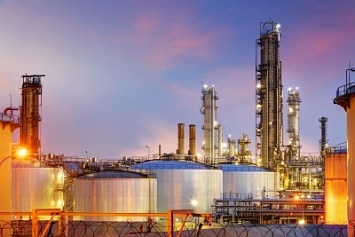Under an EPA proposal, a populous industrial sector the Agency calls the Organic Liquids Distribution (OLD) source category would be subject to new Clean Air Act (CAA) amendments pertaining to storage tanks, transfer operations, equipment leaks, and flares.

Most of the amendments result from the EPA’s Residual Risk and Technology Review (RTR) of its 2004 National Emissions Standards for Hazardous Air Pollutants (NESHAP), which applies to only OLD major sources (i.e., sources that have the potential to emit 10 tons per year (tpy) of any single HAP or 25 tpy of combined HAPs). Other amendments would eliminate an exemption from the NESHAP during periods of startup, shutdown, and malfunction and impose a new electronic reporting requirement.
RTRs are CAA requirements for all NESHAPs. Under the residual risk portion of the OLD RTR, the Agency proposes to conclude that the existing NESHAP protects the public health with an ample margin of safety; therefore, no associated amendments have been proposed. Under the technology review, the EPA says that it did identify “cost-effective developments” that would further reduce HAP emissions beyond the original NESHAP; those developments—and, particularly, advancements in HAP monitoring—are the basis for most of the proposed amendments.
OLD Facilities
Organic liquids are any crude oils downstream of the first point of custody transfer and any noncrude oil liquid that contains at least 5% by weight of any combination of the 98 HAPs listed in Table 1 of 40 CFR Part 63 Subpart EEEE. For the purposes of the OLD NESHAP, organic liquids do not include gasoline, kerosene, or diesel oil.
Facilities subject to the NESHAP fall into two types—either petrochemical terminals primarily in the business of storing and distributing organic liquids or chemical production facilities or other manufacturing facilities that have either a distribution terminal not subject to another major source NESHAP or a few miscellaneous storage tanks or transfer racks that are not otherwise subject to another major source NESHAP. The types of organic liquids and emissions sources covered by the OLD NESHAP are frequently found at many types of facilities that are already subject to other NESHAPs. If equipment is in OLD service and is subject to another 40 CFR Part 63 NESHAP, then that equipment is not subject to the corresponding requirements in the OLD NESHAP.
According to the EPA, there are 177 sources currently operating equipment subject to the OLD NESHAP. The Agency also projects that four new liquids terminals and one major terminal
expansion would also be subject to the OLD NESHAP.
Organic HAPs
The predominant HAP compounds in OLD facilities include toluene, hexane, methanol, xylenes, benzene, styrene, methyl isobutyl ketone, methylene chloride, methyl tertbutyl ether, and ethyl benzene. Equipment controlled under the OLD NESHAP are storage tanks, transfer operations, transport vehicles while being loaded, and equipment leak components (valves, pumps, and sampling connections) that have the potential to leak. Regulated equipment at existing OLD facilities emit about 2,400 tons of HAP a year. The proposal would cut this total by approximately 386 tpy, says the EPA.
Fenceline Monitoring
- The proposal includes two “cost-effective” emissions reduction options for storage vessels:
- Option 1: Revise the average true vapor pressure thresholds of OLD storage tanks for existing sources, requiring control to align with the thresholds of the NESHAP for petroleum refineries and National Emission Standards for Organic Hazardous Air Pollutants from the Synthetic Organic Chemical Manufacturing Industry, for which the thresholds are lower.
- Option 2: In addition to requirements specified in Option 1, require leak detection and repair (LDAR) using EPA Method 21 with a 500-parts-per-million (ppm) leak definition for fittings on fixed-roof storage vessels (e.g.,access hatches) that are not subject to the 95% by weight control requirements.
- To control equipment leaks, the technology review identified one cost-effective strategy—adding connectors to the monitored equipment component types at a leak definition of 500 ppm.
In lieu of the above proposed amendments, the Agency is also proposing that owners and operators of OLD operations may implement a fenceline monitoring program. The minimum required components of the proposed monitoring program are extensive. However, the Agency says the program would provide owners and operators with a flexible alternative to appropriately manage fugitive emissions of HAP from OLD operations if they are significantly greater than estimated values.
Flares
The proposal includes new operating and monitoring requirements for flares used at regulated OLD facilities; mainly:
- Flares used as air pollution control devices (APCDs) must operate pilot flame systems continuously when organic HAP emissions are routed to the flare.
- Flares used as APCDs must operate with no visible emissions (except for periods not to exceed a total of 5 minutes during any 2 consecutive hours) when organic HAP emissions are routed to the flare.
Other proposed flaring requirements affect flare tip velocity, net heating value of the combustion zone gas, data averaging periods for flare gas operating limits, and emergency flaring.
The Agency estimates the total capital costs of the proposed amendments at $4.5 million and the total annualized costs at $1.8 million (2016 dollars).
Compliance with the amendments would be required no more than 3 years after the effective date of a final rule.
